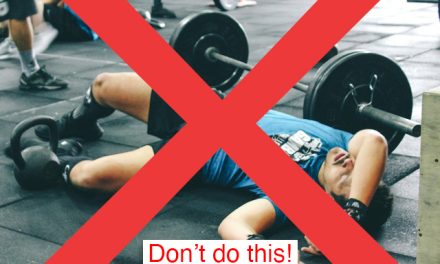In this article:
If you’re looking for a way to spice up your workouts and get more benefits in less time, you might want to give interval training a try. Interval training is a type of exercise that involves alternating short periods of intense effort with longer periods of recovery. It’s similar to circuit training, but it’s performed at a higher intensity and has more focus on aerobic training.
Interval training has many advantages over steady-state cardio, such as running or cycling at a constant pace. Here are some of the benefits of interval training and how you can get started.
It saves time
One of the main reasons people skip exercise is lack of time. But with interval training, you can get a effective workout in as little as 10 to 30 minutes. Studies have shown that interval training can provide the same health benefits as regular exercise in half the time or less . For example, one study found that 20 minutes of interval training three times per week improved aerobic capacity and muscle endurance as much as 60 minutes of moderate-intensity exercise five times per week . Another study found that 12 weeks of interval training improved cardiorespiratory fitness and insulin sensitivity more than continuous moderate-intensity exercise in overweight adults .
It targets the whole body
Interval training can be done with any type of exercise, such as running, cycling, jumping rope, or bodyweight exercises. You can also mix different exercises to target different muscle groups and skills. For instance, you can do a circuit of squats, push-ups, lunges, and burpees, with short rest periods between each exercise. This way, you can work on your strength, endurance, balance, and coordination at the same time.
It can be adapted to your needs
HIIT also allows you to vary the length and intensity of your intervals depending on your goals and fitness level. For example, if you want to improve your speed, you can do shorter intervals with longer rest periods, such as 15 seconds of sprinting followed by 45 seconds of jogging. If you want to improve your endurance, you can do longer intervals with shorter rest periods, such as 60 seconds of running followed by 30 seconds of walking.
The key is to challenge yourself during the work intervals. You should be able to recover during the rest intervals, but not fully catch your breath. You shoud be able to reach an almost comfortable level right at the end of the resting period, while you should give your 100% during the exercise period. 10 minutes of full body HIIT, or purely aerobic HIIT should feel really challenging!
It boosts your metabolism and health
Interval training is not only good for burning calories during the workout, but also for increasing your metabolic rate after the workout. This means you’ll keep burning calories and fat even when you’re resting . Interval training can also improve your cardiovascular health by lowering your blood pressure, heart rate, and cholesterol levels . Additionally, interval training can improve your blood sugar levels and insulin sensitivity, which can help prevent or manage diabetes .
It improves your VO2max and mitochondrial function
VO2max is the maximum amount of oxygen your body can use during exercise. It’s a measure of your aerobic fitness and endurance potential. The higher your VO2max, the longer and faster you can run or cycle . Mitochondria are the organelles in your cells that produce energy from oxygen and nutrients. They are essential for muscle function and health. The more mitochondria you have and the better they work, the more energy you can produce and use during exercise . Interval training can increase your VO2max by stimulating your heart, lungs, and blood vessels to deliver more oxygen to your muscles and by increasing the number of mitochondria (biogenesis) and efficiency (oxidative capacity) .
How to get started with interval training
At age-healthy we strongly suggest to use interval training to maximise the benefits of working out while reducing the time spent doing it, and reducing the risk of overtraining and injuries too. While doing HIIT (High Intensity Interval Training) with just running or cycling can highly benefit your stamina and Vo2Max, it’s also true but you will be missing out other aspects of a good training plan. In our advanced weekly plans we suggest to alternate puerely aerobic HIIT to more functional HIIT workouts, which will include planks, jump-related plyometrics, and full body exercises like the overhead slam with a slam ball, the Prowler/Sled Push, or the single arm wood chopper with elastic bands or kettlebells.
Anyway, if you’re new to interval training, you should start slowly and gradually increase the intensity and duration of your workouts. A simple way to start is to follow the 2:1 ratio, which means you work twice as hard as you rest. For example, you can sprint or ruch up the stairs for 30 seconds and then jog or walk for 15 seconds. Repeat this cycle for 10 to 20 minutes.
Interval training is a fun and effective way to improve your fitness and health in less time. Start today with our personalized trainings!
References:
: Weston KS et al., High-intensity interval training in patients with lifestyle-induced cardiometabolic disease: a systematic review and meta-analysis. Br J Sports Med 2014;48:1227-1234.
: Gist NH et al., Sprint interval training effects on aerobic capacity: a systematic review and meta-analysis. Sports Med 2014;44:269-279.
: Helgerud J et al., Aerobic high-intensity intervals improve VO2max more than moderate training. Med Sci Sports Exerc 2007;39:665-671.
: Little JP et al., Low-volume high-intensity interval training reduces hyperglycemia and increases muscle mitochondrial capacity in patients with type 2 diabetes. J Appl Physiol 2011;111:1554-1560.
: Gibala MJ et al., Physiological adaptations to low-volume high-intensity interval training in health and disease. J Physiol 2012;590:1077-1084.
: Hood MS et al., Low-volume interval training improves muscle oxidative capacity in sedentary adults. Med Sci Sports Exerc 2011;43:1849-1856.
: Boutcher SH., High-intensity intermittent exercise and fat loss. J Obes 2011;2011:868305.
: Ramos JS et al., The impact of high-intensity interval training versus moderate-intensity continuous training on vascular function: a systematic review and meta-analysis. Sports Med 2015;45:679-692.
: Jelleyman C et al., The effects of high-intensity interval training on glucose regulation and insulin resistance: a meta-analysis. Obes Rev 2015;16:942-961.
: Shaban N et al., The effects of a 2 week modified high intensity interval training program on the homeostatic model of insulin resistance (HOMA-IR) in adults with type 2 diabetes. J Sports Med Phys Fitness 2014;54:203-209.
: Bassett DR Jr, Howley ET., Limiting factors for maximum oxygen uptake and determinants of endurance performance. Med Sci Sports Exerc 2000;32:70-84.
: Holloszy JO, Coyle EF., Adaptations of skeletal muscle to endurance exercise and their metabolic consequences. J Appl Physiol Respir Environ Exerc Physiol 1984;56:831-838.





